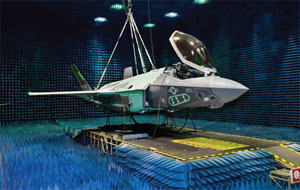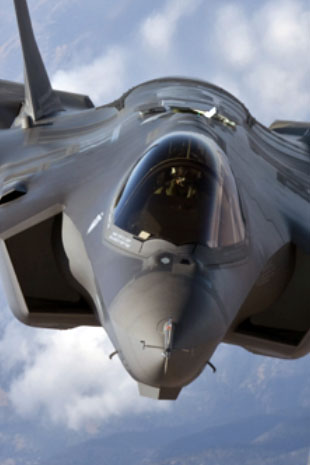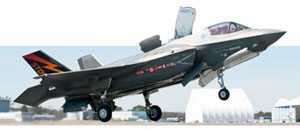 Circa.com is reporting that clever scientists at Northrop Grumman found an unexpected use for the new F-35 fighter: taking down a North Korean ballistic missile. For all the F-35’s early problems and significant costs, it does have an impressive new sensor suite that researchers believe could help quickly track missiles.
Circa.com is reporting that clever scientists at Northrop Grumman found an unexpected use for the new F-35 fighter: taking down a North Korean ballistic missile. For all the F-35’s early problems and significant costs, it does have an impressive new sensor suite that researchers believe could help quickly track missiles.
Experts suggest the F-35 could give missile interceptors like the Terminal High Altitude Area Defense (THAAD) system and Aegis missile destroyer ships a better chance of knocking out North Korean missiles. Known as the Distributed Aperture System (DAS), the suite essentially allows a pilot to “see through” the plane while tracking targets.
 Circa.com reports: “Northrop Grumman, in conjunction with the U.S. Missile Defense Agency, tested DAS in 2014 to see if it could track an intercontinential ballistic missile, according to Defense One. By incorporating data from DAS and the usual infrared satellite and radar data used to track missiles into an algorithm, researchers found the chances of hitting a missile were increased.
Circa.com reports: “Northrop Grumman, in conjunction with the U.S. Missile Defense Agency, tested DAS in 2014 to see if it could track an intercontinential ballistic missile, according to Defense One. By incorporating data from DAS and the usual infrared satellite and radar data used to track missiles into an algorithm, researchers found the chances of hitting a missile were increased.
“Here’s how the scenario could go down:
“Say North Korea decided to launch an armed nuclear warhead on an ICBM towards the U.S. or an ally. An F-35 flying nearby could use its DAS sensors to track the missile, in conjunction with other monitoring systems. It is believed that the best time to take out a ballistic missile is right after its launch. The F-35 would help cut precious seconds off of target acquisition for the interceptors, potentially stopping that missile from getting anywhere close to its target. The fact that it’s a stealth fighter practically impervious to radar probably helps, too.
 “The results are great news for the military. U.S. missile defense platforms are highly effective, but there are concerns they might not be a guarantee. Anything that can help improve the chances of avoiding a nuclear disaster would certainly be welcomed, especially considering North Korea’s latest missile is believed to have the capability to hit most of the continental U.S.
“The results are great news for the military. U.S. missile defense platforms are highly effective, but there are concerns they might not be a guarantee. Anything that can help improve the chances of avoiding a nuclear disaster would certainly be welcomed, especially considering North Korea’s latest missile is believed to have the capability to hit most of the continental U.S.
“So how much does the F-35 improve the chances of knocking out a North Korean missile? Unsurprisingly, that information is classified,” wrote Circa.
